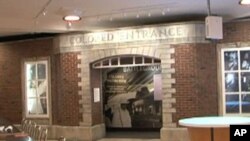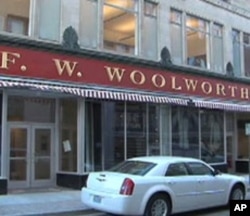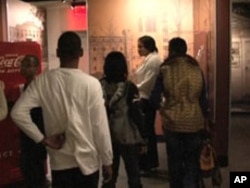On the 50th anniversary of a turning point in African American history, the doors open at the site of a famous 1960 civil rights lunch counter protest. The $23 million International Civil Rights Museum in Greensboro, North Carolina pays tribute to the struggle for racial equality in the United States.
It is the newest in a growing number of black history museums that have opened in the last 20 years.
"It is an opportunity for us to provide a moment in time in history in a place other than a book. It makes this history real," says Amelia Parker, the museum's executive director.
She expects 200,000 visitors each year which will generate millions of dollars for the local economy. "As cultural tourism expands as one of the most vibrant elements of the tourist industry, it clearly creates a venue on the east coast that will draw people from around the world."
Living History
More than 2.5 million people have visited the National Civil Rights Museum in Memphis, Tennessee since it opened in 1991. It is located at the Lorraine Motel, the site of Dr. Martin Luther King's assassination.
"It makes me want to learn more, just to get a better background and to better myself personally," says Vincent Harris, a museum visitor who came to Tennessee from Texas to learn more about black history. "The more you know, the more I can pass that on to my kids and my kids can do the same for generation and generation so the knowledge just won't be lost in time."
Beverly Robertson, president of the National Civil Rights Museum in Memphis, says that is a common motivation for visitors. "So you see this renewed interest in trying to anchor ourselves to something solid. We want something solid. Something that we can understand. Something that can help us understand our past and thus help people understand where we are today."
Looking to the future
The people who run the black history museums say they aren't competing for tourists, but are working in partnership to ensure a fuller and richer experience for their visitors.
Lonnie Bunch is director of the new Smithsonian National Museum of African American History in Washington, which will open in 2015. He says having museums in communities across the country allows the public to learn about the nation's history through local perspectives.
"I love the notion that more and more communities are embracing their history, especially their African American history," says Bunch. "And I think the more of these museums, the more these important stories are told, the better we are at understanding who we are as Americans and understanding how change is possible."
















